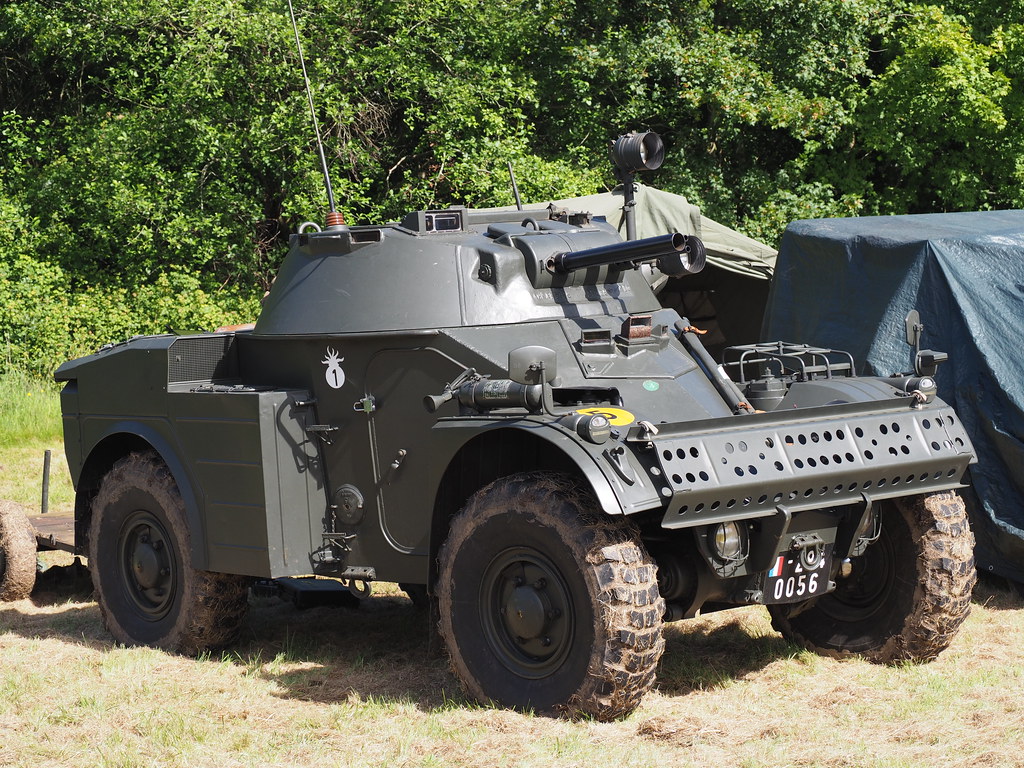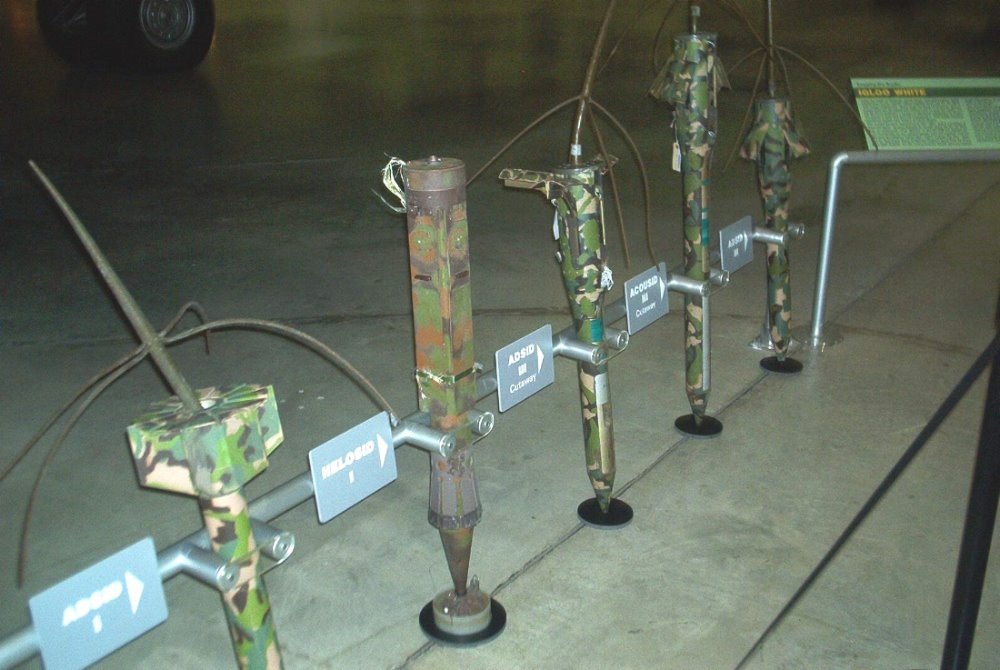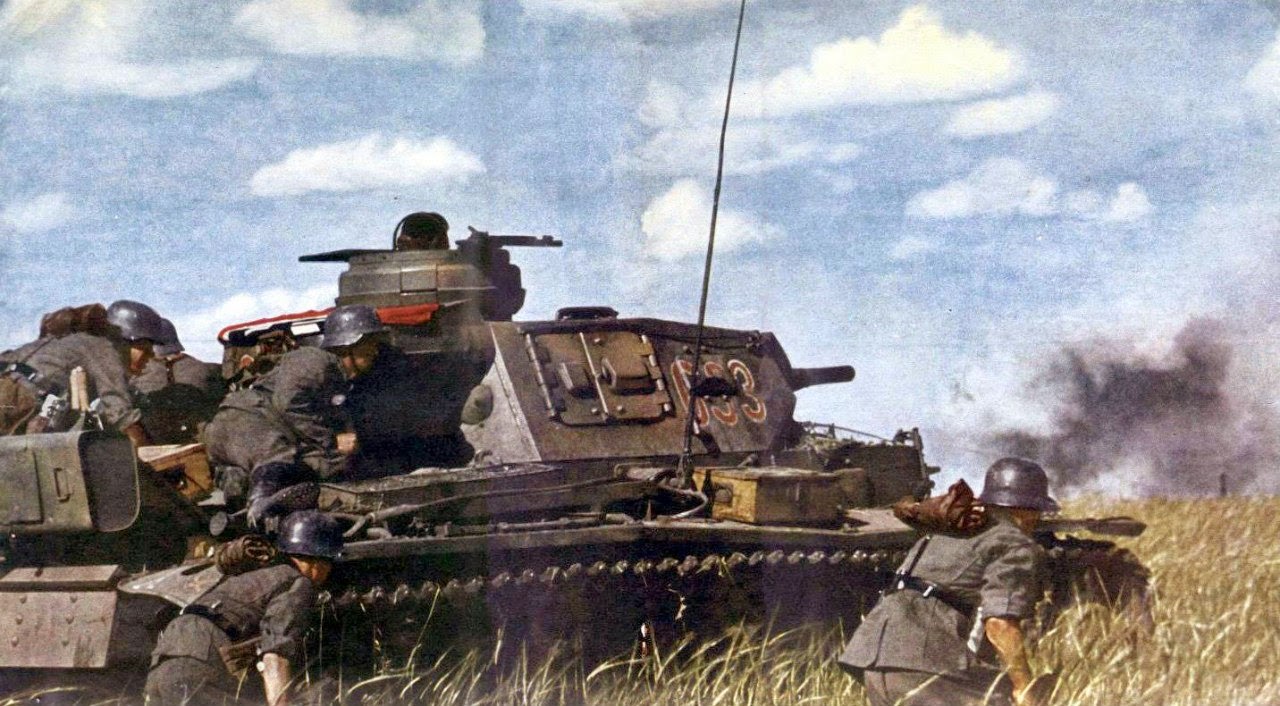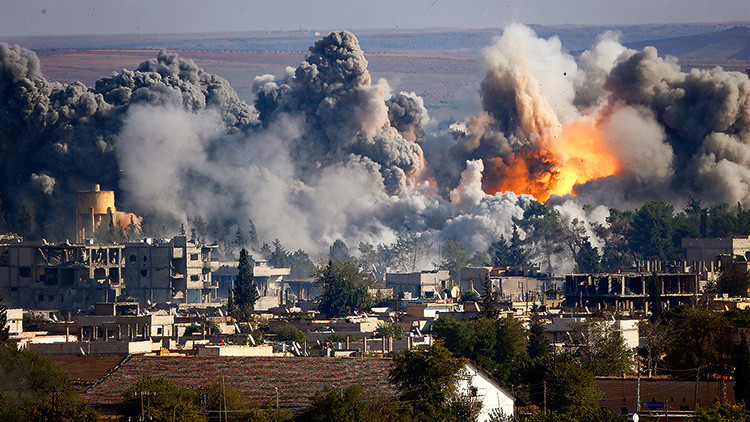(THE END)
The Multifunctional, Total or Multisubject Wars.
In general, the attacks are realized to the software of a system, looking for a «weakness» of this one. And using the malicious codes, the back entrances, etc. A penetration or attack to the software is prevented in general with an antivirus adapted to the received virus. To attack the hardware is necessary to act on the «physical component» of the computer. And his detection, with the nowadays existing miniaturization, turns out to be very improbable and long in the time, until the devastation is detected. The best way of acceding to the hardware is realizing the intrusion in the factories of components and of assemblies. But these are protected by control measures of components and external equipment, based on the nationality and the producer of them.
The cyberattacks go to cybernetic networks of the society, both public and private, to the communications and means of control of equipment and networks. Becoming concrete definite in the facilities of different out-standing or strategic sectors of a country or alliance; like, industrial centers, military communications, administrative public negotiations, social opened networks, energy distributors, intranets of banks and economic means. And they seek to paralyze or to disturb the functioning of them or to distribute in them more or less opened tendentious information, to alter or to direct the public or particular general opinion in favor of the interests not always evident of the attackers.

The cyberattact is a «total attack» of swarm type; that is, of multiple and simultaneous or sequential character. It is directed on the economic, administrative, civil and military structures, which hold and allow that a «social group» should work. It is a «form of fight» in the cybernetic area. Where «one» seeks «to occupy» tactical or strategic «advantageous positions«. And «to damage» the enemy, preventing him from keep his pace, his «habitual tempo» of functioning and stealing and depriving him sometimes of the costly goods of research and development created by him. And that were allowing him to keep a competitive advantage in national «intervention means» in the industrial, economic and military fields. A branch of the cyberattack is the industrial espionage.
With them is achieved to seriously concern and debilitate the diplomatic, economic, military and civil sectors of a society. In the civilian is the original humus, the social essence, as creator of the «national morale» and the «will of defense» of the social group. Being those sectors the «means of intervention» with which a State counts for his global, holistic defense, against the aggression and external and internal dangers.
It is known the supposedly American attack using an advanced virus against the software of the Iranian centrifugal machines. That were operating to separate the isotopes of the Uranium 235 and Uranium 239 (not fissionable), using his different “molecular mass”. Seeking to obtain U235 enough pure to create «self fissionable critical masses«, the explosive of the atomic bombs, for his supposed nuclear devices. As the % of purity between an industrial use, to generate electricity, for example, and the great purity that needs a «critical mass», both «activities of successive enrichment» are perfectly recognizable by the foreign intelligence. In May, 2010 it was detected by the Iranians a malicious virus, called Stuxnet, in the of Nataz’s nuclear station. And that gave to a thousand of them the «order» of self-destructing. But, already in January of this year, the inspectors of the Atomic International Energy Agency (the AIEA) and the Iranian technical personnel had detected that many centrifugal machines were working slowly or badly and without a certain motive.

China takes a privileged singular position as a «great universal factory» in the global economy. And the same sells cheap products of immediate consumption on a large scale, that compete principally in price, which makes already products of high added value with the most modern technologies. This allowed him to lead one of the most significant and consistent cases of cyberattacks on a large scale against a country or coalition. The history was published by Bloomberg.
The agents of a unit of espionage and cybernetic war of the Chinese Popular Army managed to place some malicious «components» in the motherboards of IT equipment of the Supermike company, of San Jose, California. Who buys to Chinese factories, which have, in turn, subcontracts and suppliers of components in China. This way, the IT equipment with this «Trojan horse» allowed the cybernetic Chinese spies to accede for 3 years to industrial and governmental secrets of the EE. UU.
The anomalies emerged in 2015, when Elementary Technologies, who was designing software to compress files, reported of them in the baseplates of his cybernetic servants. Around 30 technological companies existed, between them Amazon and Apple, and diverse agencies of American intelligence, «invaded» in the Chinese attack. It was verified that the cybernetic servants of Elementary were mounted by Supermike, which is the major world producer of cybernetic servants.
It was found that some plates of the cybernetic servants had installed a «perfected component» that did not appear in his design and that it was not a chip. This multifunctional «foreign corps» would have been placed in 4 factories of China that mount the cybernetic servants of Supermike.
 THE SUPPOSED CHINESE COMPONENT INTRODUCED IN THE HARDWARE.
THE SUPPOSED CHINESE COMPONENT INTRODUCED IN THE HARDWARE.
The physical interventions in the hardware are more difficult, because all customers theoretically verify the equipment that they make or buy. Attack to the other people’s hardware foreign are doing usually during his traffic from the manufacturer to the client. That is the method that the American agencies use. But this malicious and comfortable manipulation of the Chinese spies can be effected because China is the great manufacturer (with license or without her) of hardware (computers, mobiles). And the directors and controls of his factories collaborate of well or badly degree with the «requests of the authorities», in a wide sense.
And, finally, some days ago was important the recidivist case, still not close, of the Chinese giant of the telecommunications Hua Wei. This way, the agencies of intelligence of the U.S.A- has warned that must not be used the products and services of Huawei and ZTE. Accusing that the terminals of these brands might be working as «cybernetic concealed agents«, spying for the Chinese government. Also, the Pentagon has prohibited to his personnel to introduce in the military bases the products of these brands.
China, as a great power example, of realizing his own and adapted «combinations» of means of intervention in his different stages.
 CHINA’S ASPIRATIONS…
CHINA’S ASPIRATIONS…
One first Chinese national foreign objective is to promote the multipolarity in the world structure of the great powers and his allies. Looking that does not exist a world hegemonic power, like the USA, that hinders him in the extension of his influence and power from his «nodal center«.
For it, he will create alliances and will establish agreements with others countries in detriment or in substitution of that hegemonic power. And he will be a «obstructionist intransigent actor» in all the actions that that power promotes unilaterally in the international forums (UNO, Atomic International Energy Agency). This way, the actions of the western nations in the Syrian conflict were frustrated and limited by the systematic veto of China to his approval in the Security Council. Though the Chinese communists consider to be out of the fight for the direct influence in the Moslem Middle East. And, the Chinese decision to renew his relations with the Sub-Saharan Africa, it was partly a strategic corollary of the «war to the terror» of the USA and the NATO in Middle East, as supplier region of crude oil and gas to the whole world.
 A CHINESE NAVAL GROUP OF STRATEGIC PROJECTION SAILS IN THE CHINA’S SOUTH SEA, AFTER CROSS THE TAIWAN’S STRAIT.
A CHINESE NAVAL GROUP OF STRATEGIC PROJECTION SAILS IN THE CHINA’S SOUTH SEA, AFTER CROSS THE TAIWAN’S STRAIT.
China is for Russia and Russia is for China a partner, competitor and rival, if it is worth this polyvalent definition, which does that none of the expressions is in fullness. Both are «emergent powers«, according to the new nomenclature, determined in growing, in not get damage directly for the moment and in eroding the hegemonic power and his Europeans allied.
This way, the Chinese would not act directly, not by third interposed countries, in Syria, in the boiling cauldron of the Asia of the Southwest, scene of the global contest that sunnis and Shiites develop for the control and the supremacy in the Islam. But they will do it collaborating up to a point with the interests and the diplomatic propositions of the Russians. Reinforcing this way a political common position of counterweight and neutralization of the influence of West in the zone. And in exchange for a certain Russian reciprocity in favor of the Chinese interests, in other countries in which do not shock the national influences of both.  A CHINESE NAVAL BASE OF MISILES IN A SMALL ISLAND OF THE PARACELSO’S ARCHIPELAGO .
A CHINESE NAVAL BASE OF MISILES IN A SMALL ISLAND OF THE PARACELSO’S ARCHIPELAGO .
A strategic exterior Chinese preference goes towards the Indian subcontinent and to the nations of the first Asian circle of terrestrial and maritime nearness. The India is a radical rival at his measure, with whom it beared several frontier wars in the middle of the 20th century. The India has a political structure more advanced than China, the liberal participant democracy, still in spite of all his contradictions, ethnic, religious and social discrimination and lacks of all kinds. And it possesses a demographic strength that overcomes China’s people grow. Though lately the Chinese begin to realize the irrational of his «pseudo scientists» methods of the control of the birthrate. That the communist China applied in altars of a material rational progress. Progress which only enjoys in diverse degrees at the present, the members of the communist party and his families, the technical personnel who design, stimulate and develop it, the chiefs and officials of the armed forces and a minority of entrepreneurs and men of business. That have prospered at the shade of an institutional inveterate clientele of the mentioned public elites.
At the west of China, close with his Sinkiang’s immense region (Xinjiang), in the Oriental Turkestan, there is a rosary of former soviet socialist republics of 2 thousands Km long, that get until the Caspian Sea. They are, from east to west, Kazajistan, Kirguistan, Tadzikistan, Uzbekistan and Turkmenistan. And there form these countries a monolithic set of several etnias, gathered in the names of them, but extended over several simultaneously, of Turkoman origin, of the central steppes of Asia. And agglutinated also by his belonging to the Islam sunní. All this form a multinational defensive and refractory shield to the expansive activity and to the significant presence of the Chinese in his internal matters or in his exterior trade, always with effects of political guardianship. These Turkoman Muslims are rather potentials allied of the Great Russia, with only she puts a bit of care and dedication to attract and to attend them.
 CHINA PROJECTS IN AFRICA HER ECONOMY AND INFLUENCE. DISPLAYING HERSELF AS A COUNTRY THAT NEVER WAS COLONISLIST.
CHINA PROJECTS IN AFRICA HER ECONOMY AND INFLUENCE. DISPLAYING HERSELF AS A COUNTRY THAT NEVER WAS COLONISLIST.
Another great strategic preference of Beijing is to extend his influence and increase the economic and diplomatic bows with the development nations, specially those who have «natural resources and primary cultures«, that are necessary for the manufacturing production, the supply and the general development of the nations. She has taken it even far beyond his geographical borders of political influence or strategical military.
With the interminable income of his exports and with the knowledge of the development in many areas, China does intelligent and massive strategic national «landings» in diverse countries of Africa and Spanish America. With them it establishes «binding alliances» of backing, advising and support. Trying to anchor firmly and creating allies or «friends» by all this world in development.
Going firmly by the political, economic, diplomatic and military way of turning to what China really seeks to be:
one (or the) hegemonic power in the 21st century.
The litigious, even violent, and, at least, very menacing, that China keeps with the countries of the East Asian, demonstrate how awkward, despotic and subjecting can be his presence in the short distances. When China thinks that com into play his national interests or his national pride. Whose loss in hands of the «foreign powers» until almost middle of last century, is one of the neurotic tics of the exterior politics of Beijing, from October 1, 1949.
In the Sea of the South of China, this power is expansive and hegemonic. And keeps litigious more or less important with the rest of the Asian countries bathed by this sea. That are The Philippines, Malaysia, Brunei, Indonesia, Singapore, Thailand and Vietnam.
This sea has 3500 thousands Km2. And China thinks that it is his «Second Persian Gulf«, for the sub aquatic oil and natural gas deposits, existing and estimated. For comparison and perspective, the Mediterranean Sea only has 2500 thousands Km2 and his coasts bathe to 24 countries in three continents. None of which is hegemonic or expansive.
In order to settle itself in the «disputed archipelagos«, China follows a strategy of small and consolidated advances. Installing in them, in islands and rocky islands, military air or naval bases and extending the logistic capacities of some of them, substracting area to the sea. This has forced to some coastal countries to realize occupations in the islands of his regional seas. Destined, rather, to indicate his presence and sovereignty.
Two of the most showy cases are the archipelagos of Spratly and Paracelso.
The Spratly has hundreds of islands and rocky islands spread by more than 400 thousand Km2, near the Philippines. In relation to this archipelago, the Court of Arbitration of The Hague already pronounced that does not exist a legal base for the Chinese claims. And that the Spratly are not islands with economic projection. But, China, simply, does not recognize it.
The Paracelso’s archipelago, at 700 Km south of Hong Kong, is placed at the west of the southern Sea of China, in the entry of Tonkin’s gulf (Vietnam). There, China has crude oil platforms in dispute with the Vietnamese government. Near the Chinese facilities have been diverse incidents between the Vietnamese fishing boats and patrols and the Chinese ships of escort. That have dispersed them using water cannons.
 Colonel General Walther Model.
Colonel General Walther Model. The Rzhev’s projection was formed after the Soviet counter-offensive in defense of Moscow.
The Rzhev’s projection was formed after the Soviet counter-offensive in defense of Moscow. NEW ZEALAND’S LONG RANGE RECON PATROL.
NEW ZEALAND’S LONG RANGE RECON PATROL. A PATROL…
A PATROL… COVERING A SECTOR…
COVERING A SECTOR… MINES BARRIER.
MINES BARRIER. SDKFZ 263.
SDKFZ 263. PANHARD AML 245.
PANHARD AML 245. ENGESA EE-9 CASCAVEL.
ENGESA EE-9 CASCAVEL. DRONE
DRONE  ADSID SENSORS .
ADSID SENSORS . A BOEING OF THE JSTARS SYSTEM.
A BOEING OF THE JSTARS SYSTEM.



 THE SOVIET POLISH WAR OF 1920.
THE SOVIET POLISH WAR OF 1920. SWEEPING THE RUSSIAN HORDES.
SWEEPING THE RUSSIAN HORDES.






 THE SUPPOSED CHINESE COMPONENT INTRODUCED IN THE HARDWARE.
THE SUPPOSED CHINESE COMPONENT INTRODUCED IN THE HARDWARE. CHINA’S ASPIRATIONS…
CHINA’S ASPIRATIONS…  A CHINESE NAVAL GROUP OF STRATEGIC PROJECTION SAILS IN THE CHINA’S SOUTH SEA, AFTER CROSS THE TAIWAN’S STRAIT.
A CHINESE NAVAL GROUP OF STRATEGIC PROJECTION SAILS IN THE CHINA’S SOUTH SEA, AFTER CROSS THE TAIWAN’S STRAIT. A CHINESE NAVAL BASE OF MISILES IN A SMALL ISLAND OF THE PARACELSO’S ARCHIPELAGO .
A CHINESE NAVAL BASE OF MISILES IN A SMALL ISLAND OF THE PARACELSO’S ARCHIPELAGO . CHINA PROJECTS IN AFRICA HER ECONOMY AND INFLUENCE. DISPLAYING HERSELF AS A COUNTRY THAT NEVER WAS COLONISLIST.
CHINA PROJECTS IN AFRICA HER ECONOMY AND INFLUENCE. DISPLAYING HERSELF AS A COUNTRY THAT NEVER WAS COLONISLIST. Russians in Syria. First, they devastate and then his infantry advances to sweep away and occupy. The Syrian civil dead do not matter for them.
Russians in Syria. First, they devastate and then his infantry advances to sweep away and occupy. The Syrian civil dead do not matter for them. Two disembarkation vessels of the Black Sea’s Russian Fleet load troops for Tartus’s Syrian port. «To defend the national Russian interests in Syria».
Two disembarkation vessels of the Black Sea’s Russian Fleet load troops for Tartus’s Syrian port. «To defend the national Russian interests in Syria».
 Prince Klemens Wenzel Metternich (1773-1859). As diplomat was more important in his achievements, that Napoleon in his wars.
Prince Klemens Wenzel Metternich (1773-1859). As diplomat was more important in his achievements, that Napoleon in his wars.  The Roman Palace of the Congregation of Propaganda Fide.
The Roman Palace of the Congregation of Propaganda Fide. Reagan and Gorbachev.
Reagan and Gorbachev.
 Cuban «internationalists» Forces supporting Ethiopia against Somalia in 1977.
Cuban «internationalists» Forces supporting Ethiopia against Somalia in 1977. North Vietnameses regular Forces equiped with Soviet design’s PPSh-41 sub machineguns.
North Vietnameses regular Forces equiped with Soviet design’s PPSh-41 sub machineguns. The Soviet tanks fight against an evasive and fleeting irregular enemy in Afghanistan. Who will win?
The Soviet tanks fight against an evasive and fleeting irregular enemy in Afghanistan. Who will win? Russian Forces fight in Syria in support of al-Assad’s regime.
Russian Forces fight in Syria in support of al-Assad’s regime. The SEALs.
The SEALs. Soviet infantry tanks riders.
Soviet infantry tanks riders. Lieutenant General Nikolai Vatutin, chief of the Southwest Front.
Lieutenant General Nikolai Vatutin, chief of the Southwest Front. Major General Vasily Badanov.
Major General Vasily Badanov. Fieldmarshall Erich von Manstein.
Fieldmarshall Erich von Manstein. Karl Spang, as German general.
Karl Spang, as German general. Lieutenant General Martin Fiebig
Lieutenant General Martin Fiebig T-70 Russian light tank.
T-70 Russian light tank. Colonel General Pavel Romistrov, commander of the 5º Tank Army of the Guard.
Colonel General Pavel Romistrov, commander of the 5º Tank Army of the Guard. Telegram of condolence of the General Assistant of the Secretary of the War to the family of one of the «missing persons» of the «Task Force Baum».
Telegram of condolence of the General Assistant of the Secretary of the War to the family of one of the «missing persons» of the «Task Force Baum».  Recent Marshal von Paulus surrenders his Staff in Stalingrad.
Recent Marshal von Paulus surrenders his Staff in Stalingrad. Colonel General of the Luftwaffe Wolfram von Richthofen.
Colonel General of the Luftwaffe Wolfram von Richthofen. The Marshal of the USSR Aleksander Vasilievsky.
The Marshal of the USSR Aleksander Vasilievsky.